Swamps are diverse ecosystems that exist in low-lying areas, characterized by an abundance of water, vegetation, and wet soils.
Swamps are home to a variety of bird species that have adapted to their specific habitat, feeding, and breeding requirements in this particular ecosystem.
Bird watchers are often drawn to swamps to observe and admire the fascinating behavior and unique adaptations of wetland birds such as egrets, herons, sandpipers, and marsh birds.
This article will give an overview of the birds that inhabit swamps, their physical and behavioral characteristics, their role in the ecosystem, and how their survival is threatened by human activities.
1. American Coot
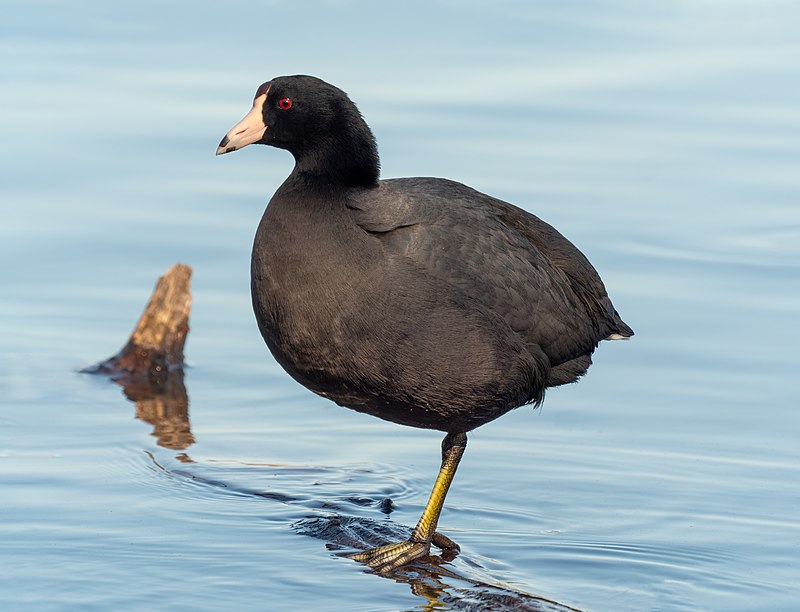
The American coot is a bird of the Rallidae family, commonly mistaken for ducks. However, they are only distantly related and have broad lobed scales on their lower legs and toes that fold back with each step to help them walk on dry land, unlike ducks which have webbed feet.
Coots are omnivores who typically live in freshwater marshes, ponds, and lakes but can also be found in brackish water habitats or even open oceans during migration season.
They feed mainly on algae and aquatic plants as well as small fish, snails, insect larvae, and worms from time to time.
The males display territorial behaviour by chasing away intruders within their territory while females lay eggs mostly.
In floating nests made of vegetation near shorelines or islands among reeds where chicks hatch after about three weeks incubation period before swimming off into adulthood shortly afterward at 10-12 weeks old.
Scientific classification:
| Kingdom | Animalia |
| Phylum | Chordata |
| Class | Aves |
| Order | Gruiformes |
| Family | Rallidae |
| Genus | Fulica |
| Species | F. americana |
Also Featured In: Most Popular Bird Species in North America, Phoenix Birds You Should Know
2. Black-Necked Stilt
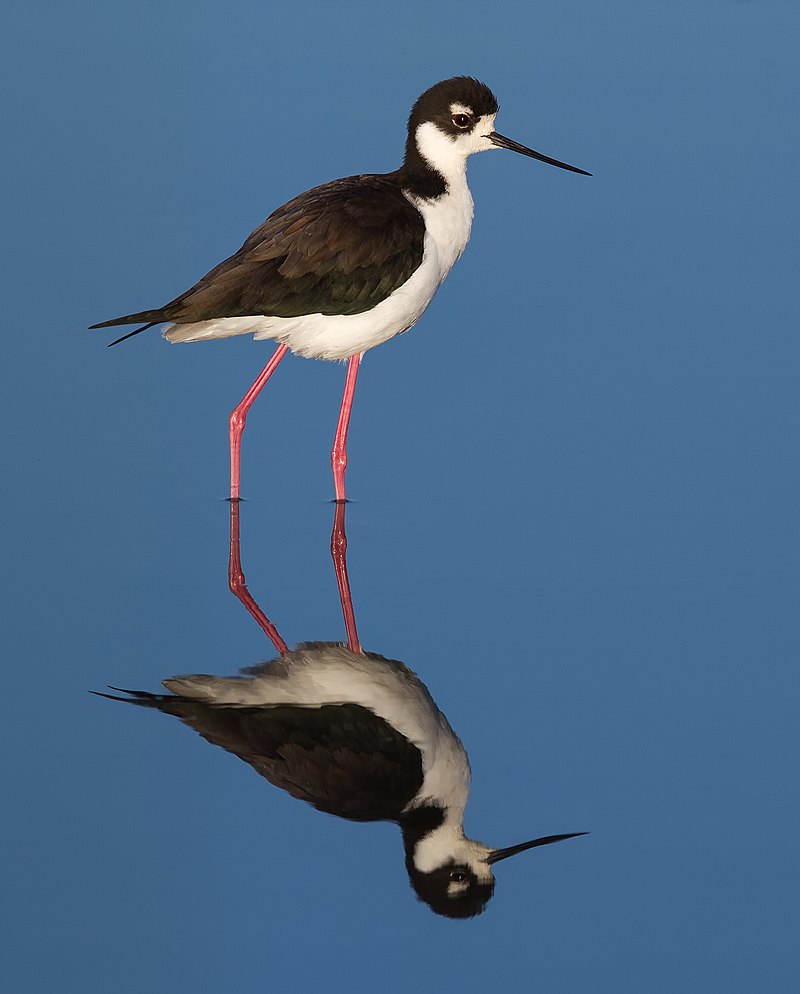
The Black-necked Stilt is an elegant shorebird that can be found from the coastal areas of California to Florida, then south through Central America and Brazil.
It has black upperparts contrasted by long white wings with a glossy sheen. Its striking red eyes are set against its white facial mask while its legs are bright pinkish in coloration.
The Haematopus mexicanus species inhabits marshy wetlands and brackish lagoons where it feeds on insects, crustaceans, small amphibians, and fish which they catch using their slender bill or chase after them as they run across the surface of water or mudflats.
This bird typically nests near shallow waters but will use any habitat type if food resources are available nearby making it a highly adaptable species well suited for human-altered habitats such as rice fields and sewage ponds.
Scientific classification:
| Kingdom | Animalia |
| Phylum | Chordata |
| Class | Aves |
| Order | Charadriiformes |
| Family | Recurvirostridae |
| Genus | Himantopus |
| Species | H. mexicanus |
Also Featured In: Beautiful Brazilian Birds, Water Birds Live around Us
3. Green Heron
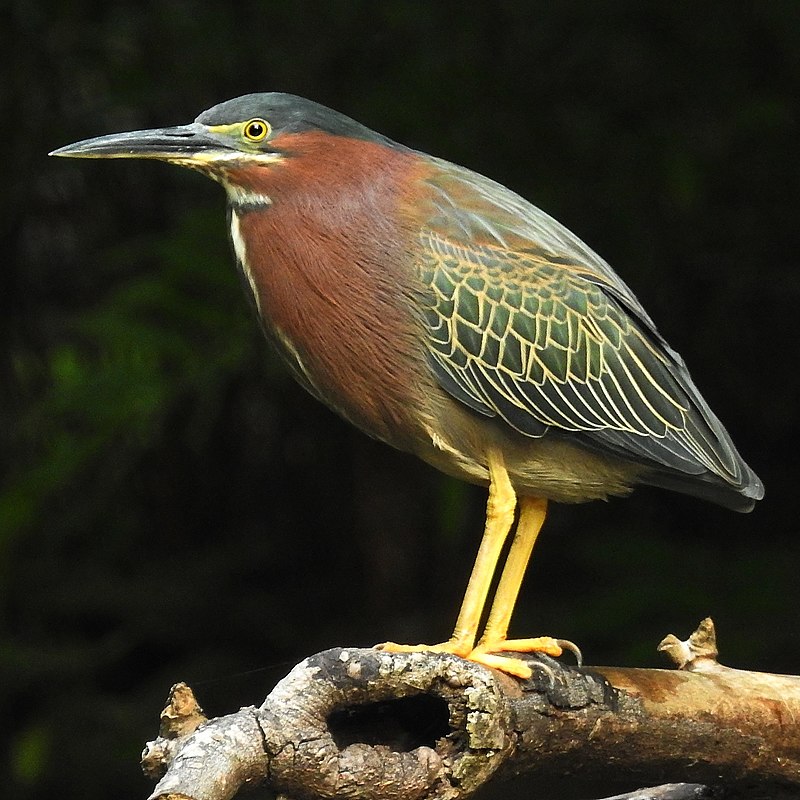
The Green Heron (Butorides virescens) is a small heron found throughout North and Central America.
Its scientific name comes from the Middle English ‘butor’ meaning bittern, combined with the Latin term for its distinctive greenish color – ‘virescens’.
For many years it was considered to be part of the same species as the Striated Heron (Butorides striata), commonly referred to as “green-backed herons”.
The nominate subspecies inhabits wetlands across much of this range, where they can be spotted stalking about in shallow water looking for fish or frogs on which to feed.
They are fascinating wading birds that have even been known to use tools such as sticks or baited lines when fishing.
Scientific classification:
| Kingdom | Animalia |
| Phylum | Chordata |
| Class | Aves |
| Order | Pelecaniformes |
| Family | Ardeidae |
| Genus | Butorides |
| Species | B. virescens |
Also Featured In: Top Birds Found in Mexico, Common Southern Californian Birds
4. American White Ibis
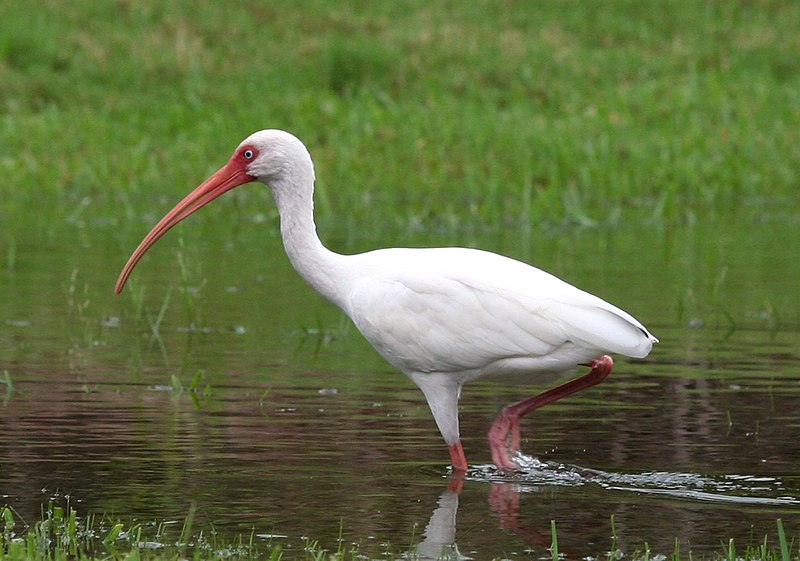
The American white ibis is a medium-sized bird with an overall white plumage and long legs. It has a bright red-orange downward curved bill, and black wing tips that are usually only visible in flight.
This species of ibis can be found from Virginia south through most of the coastal New World tropics.
They have been known to inhabit marshes, swamps, ponds, lakeshores as well as mangrove forests near water sources where they feed on crustaceans such as crabs and shrimp among other aquatic animals like insects or snails.
The American white ibis plays an important role in its ecosystem by helping to control insect populations which helps maintain balance within these environments.
Scientific classification:
| Kingdom | Animalia |
| Phylum | Chordata |
| Class | Aves |
| Order | Pelecaniformes |
| Family | Threskiornithidae |
| Genus | Eudocimus |
| Species | E. albus |
Also Featured In: Birds You’ll Find in South Texas , Everglades Birds
5. Little Blue Heron
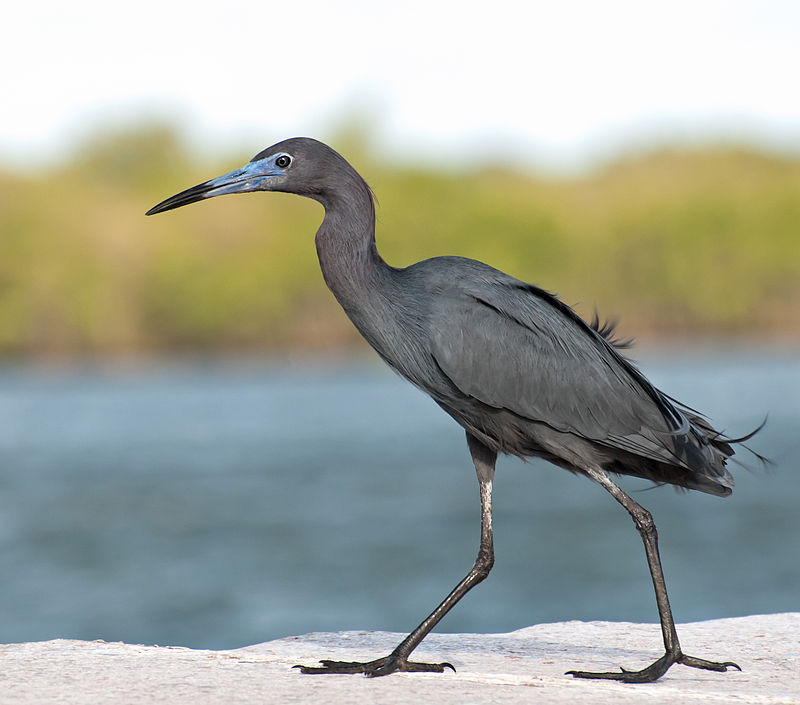
The Little Blue Heron is a small, darkly-colored heron with two-toned bill. Juveniles are completely white, similar to the Snowy Egret. In breeding season, adults develop unique coloration on their head and legs.
The bird has an expansive habitat range that covers much of the Americas from North America down to South America.
They feed mostly in shallow water areas like tidal flats or marshes and eat small aquatic animals such as fish, frogs, and crustaceans.
This species can also be found along coastal regions where they gather at night for roosting purposes during winter months when food sources become more scarce due to the migration patterns of its prey animals.
These birds have adapted well over time allowing them to persist in most habitats throughout their wide range even despite environmental changes caused by human activities such as pollution or development projects near wetlands ecosystems which are essential for this species’ survival.
Scientific classification:
| Kingdom | Animalia |
| Phylum | Chordata |
| Class | Aves |
| Order | Pelecaniformes |
| Family | Ardeidae |
| Genus | Egretta |
| Species | E. caerulea |
Also Featured In: Blue Birds You’ll Found around Us, Birds that Live around Central Florida
6. Ibis
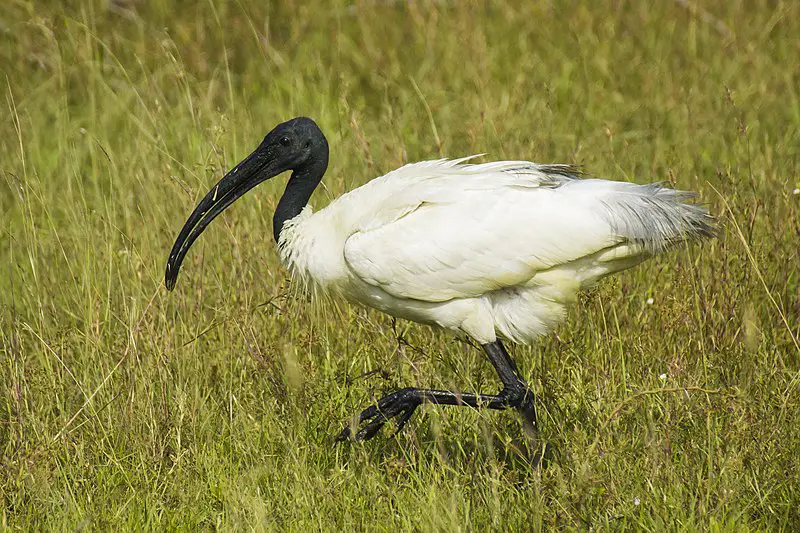
Ibis is a type of long-legged wading bird belonging to the family Threskiornithidae. They inhabit wetlands, forests, and plains across many parts of the world.
The name ibis comes from Latin and Ancient Greek words for this group of birds which also can be found in scientific names like Bubulcus ibis – mistakenly identified as a bovine animal in 1757.
Ibises have characteristically curved bills used to capture food items such as fish, reptiles, or frogs while they are searching through mud or shallow water with their feet.
Furthermore, these birds usually live in large flocks which helps them protect themselves against predators by keeping an eye out for each other’s safety during hunting times.
Scientific classification:
| Kingdom | Animalia |
| Phylum | Chordata |
| Class | Aves |
| Order | Pelecaniformes |
| Family | Threskiornithidae |
| Subfamily | Threskiornithinae Poche, 1904 |
Also Featured In: Egyptian Birds, Flight Birds You Should Know
7. Little Egret
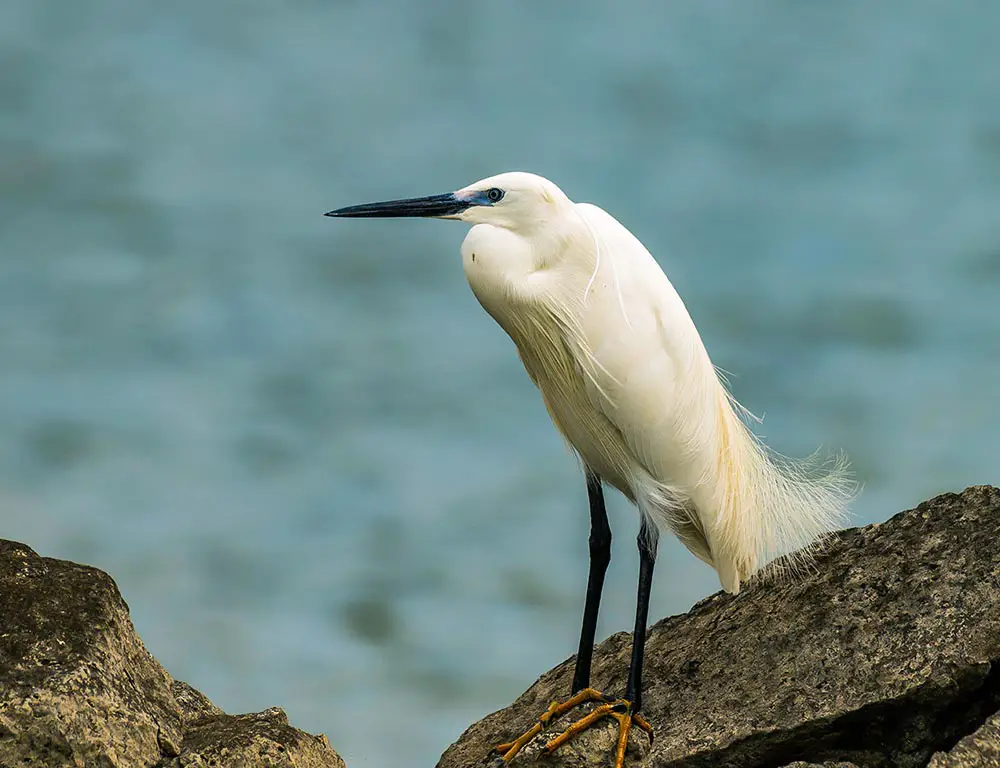
The Little Egret is a small white heron with a sleek black beak, long black legs, and in some cases yellow feet.
It can be found near aquatic areas where it feeds on molluscs, amphibians, and insects while also occasionally feeding on land creatures such as lizards or rodents.
Breeding seasonally they make platform nests of sticks being built either by themselves or in colonies alongside other water birds.
They are widely distributed across the world from Europe to Africa, Asia to Australia making them an easily recognizable bird species often seen at waterside locations searching for their next meal.
Scientific classification:
| Kingdom | Animalia |
| Phylum | Chordata |
| Class | Aves |
| Order | Pelecaniformes |
| Family | Ardeidae |
| Genus | Egretta |
| Species | E. garzetta |
Also Featured In: Birds that Commonly Found in Pond , Hong Kong Birds You Need to See
8. Common Crane
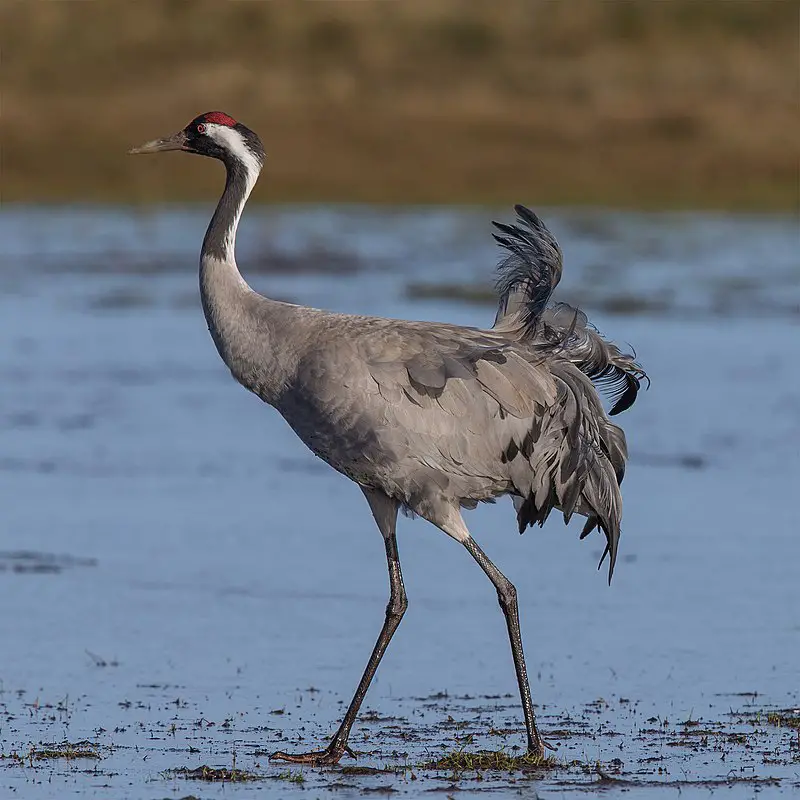
The Common Crane is a beautiful bird with grey plumage and white feathers on its head, neck, and wings. It stands up to 1m tall and has a wingspan of around 2m.
This species is found in Europe as well as parts of Asia, Africa, and the Middle East. Their diet consists mainly of plants such as grasses, grains, insects, and small invertebrates like worms or molluscs.
The crane typically forages by walking slowly through fields looking for food items that it can pick out from the ground using its long beak.
During breeding season they gather together in large flocks which are an impressive sight to behold.
These birds have been known to live up to 25 years in captivity; however, their lifespan is likely shorter when living wild due to predation risk from eagles or foxes amongst other threats.
Scientific classification:
| Kingdom | Animalia |
| Phylum | Chordata |
| Class | Aves |
| Order | Gruiformes |
| Family | Gruidae |
| Genus | Grus |
| Species | G. grus |
Also Featured In: Native Birds Of Germany,
9. Great Egret
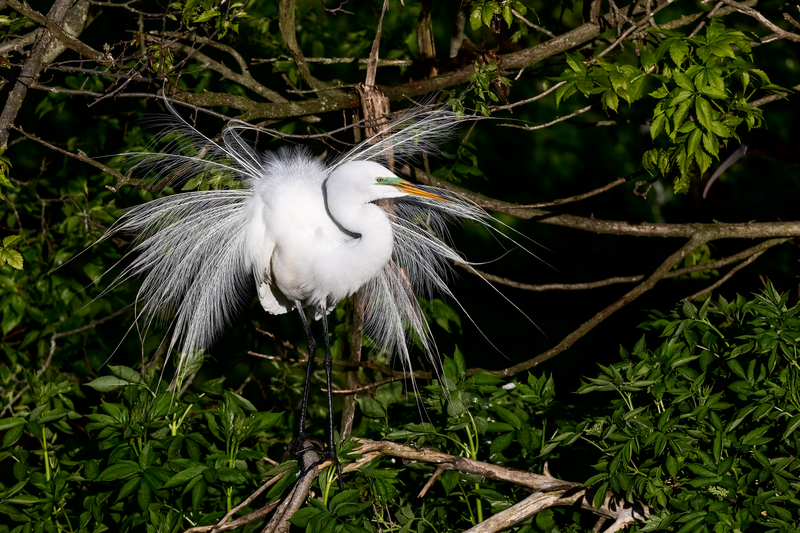
The Great Egret is a large, white bird found in many regions of the world. It has four subspecies that reside across Asia, Africa, the Americas, and southern Europe.
This species usually lives near bodies of water such as lakes and marshes. They are also now starting to spread into more northern areas of Europe due to climate change.
These birds have long yellow legs with an impressive wingspan for their size which allows them to soar majestically through the sky hunting for fish or amphibians in shallow waters below.
Their feathers have been used historically by Native Americans as part of traditional garments or ceremonies but this practice should be avoided today so these amazing creatures can thrive without harm from humans.
Scientific classification:
| Kingdom | Animalia |
| Phylum | Chordata |
| Class | Aves |
| Order | Pelecaniformes |
| Family | Ardeidae |
| Genus | Ardea |
| Species | A. alba |
Also Featured In: Most common Birds in France, Most Common Romanian Birds
10. Rail
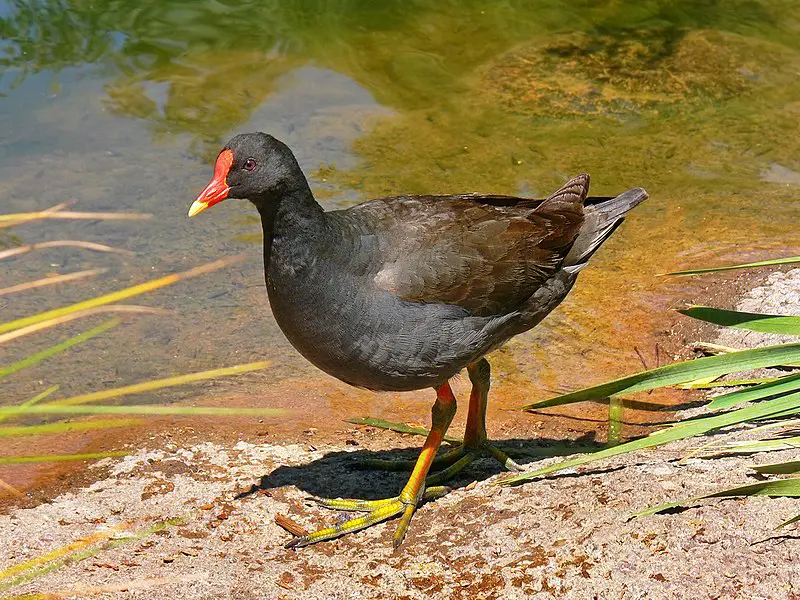
Rails are a diverse family of birds, ranging from small to medium size and living in habitats across the world.
They can be found around wetlands, as well as any other land-based environment except for deserts, polar regions, or areas with persistent snow cover.
These ground-dwellers have short legs and long toes that help them maneuver through wetland vegetation easily.
They typically feed on insects and aquatic invertebrates but will also eat seeds and berries when available.
Species such as coots, crakes, and gallinules have evolved different bill shapes to allow them to navigate their environments more efficiently while searching for food.
Rails live both alone or in pairs depending on the species; some migrate seasonally while others remain at one location year-round.
Scientific classification:
| Kingdom | Animalia |
| Phylum | Chordata |
| Class | Aves |
| Order | Gruiformes |
| Family | Rallidae Rafinesque, 1815 |
Also Featured In: Italian Birds You Should Know, Birds of Sweden
11. Stork
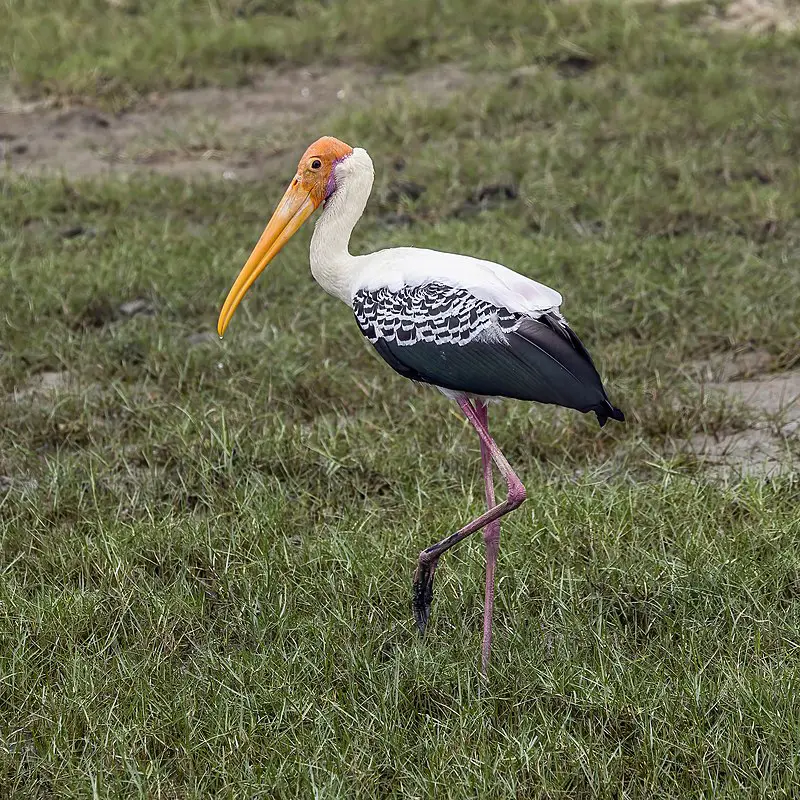
Storks are majestic birds, easily recognizable by their long necks and legs. They belong to the family Ciconiidae, making up the order Ciconiiformes.
Storks inhabit many areas around the world but generally prefer drier habitats than other wading birds like herons or ibises which have been moved to separate orders.
Despite being large they can be quite graceful in flight as well as when hunting for food such as insects, small mammals, and reptiles near shallow waters.
During nesting season stork pairs build nests on high trees or platforms made of sticks and twigs where they lay eggs that hatch after about a month of incubation time by both parents taking turns sitting on them warmly until hatching day.
Scientific classification:
| Kingdom | Animalia |
| Phylum | Chordata |
| Class | Aves |
| Clade | Aequornithes |
| Order | Ciconiiformes Bonaparte, 1854[1] |
| Family | Ciconiidae J. E. Gray, 1840[1] |
Also Featured In: Native South Korean Birds, Bulgarian Birds
12. Great Blue Heron
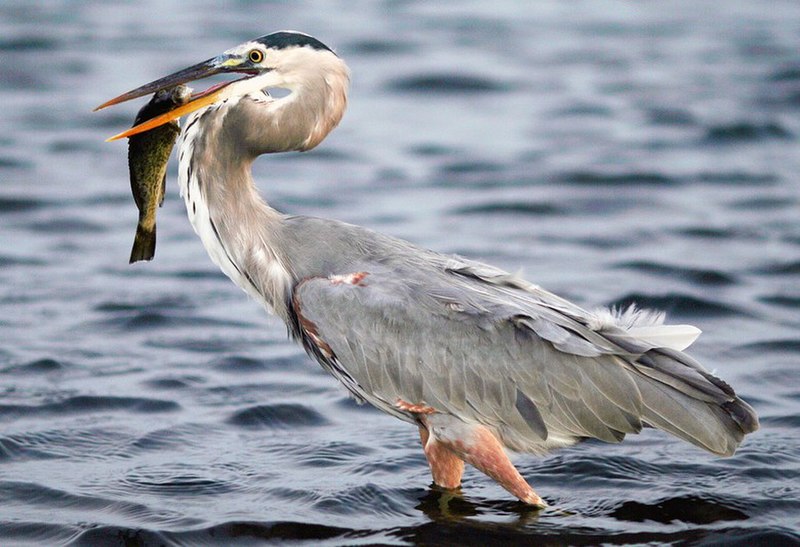
The Great Blue Heron is a majestic wading bird found in many parts of North America, Central America, the Caribbean, and even as far away as the Galapagos Islands.
It has an impressive wingspan which can reach up to six feet wide. Its feathers are mainly bluish-gray with brownish streaks on both its neck and chest while its head displays white plumes.
The adult herons can also be identified by their yellow bill and legs.
They live near bodies of water such as lakes, marshes, or rivers where they feed on fish using a spear-like motion with their sharp bills.
An all-white population exists only in South Florida and the Florida Keys making it unique.
Scientific classification:
| Kingdom | Animalia |
| Phylum | Chordata |
| Class | Aves |
| Order | Pelecaniformes |
| Family | Ardeidae |
| Genus | Ardea |
| Species | A. herodias |
Also Featured In: Common Birds in Canada, Birds Commonly Found in New York
13. Sandhill Crane
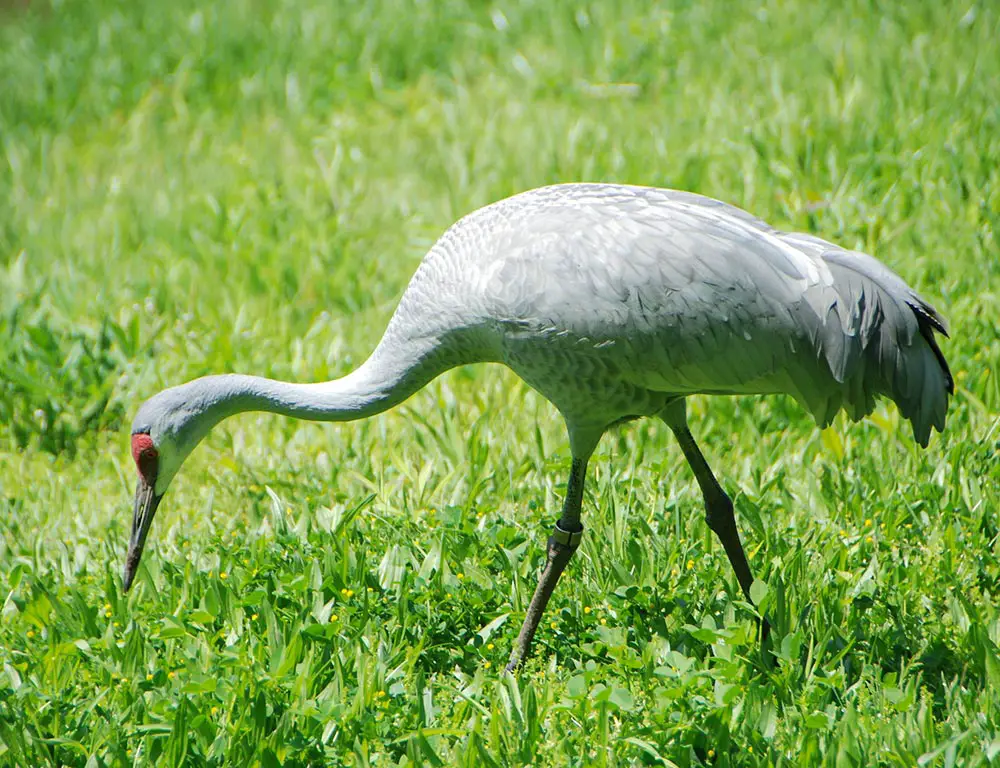
Sandhill Cranes are a large species of crane native to North America and northeastern Siberia. They are known for their distinctive calls, long legs, and long necks.
These birds typically inhabit wetland areas like the Platte River in Nebraska’s Sandhills on the Great Plains.
In Central Florida, they often gather at the edges of bodies of water such as lakes or rivers.
During the breeding season, sandhill cranes can be seen performing elaborate courtship dances that involve bowing and jumping in unison with their partner.
Their diet consists mainly of plant material including grains, roots, tubers, and aquatic plants which they obtain by pecking or digging into mudflats using their bill or feet respectively.
With an average lifespan between 10-20 years, these majestic creatures make great additions to any wetland habitat.
Scientific classification:
| Kingdom | Animalia |
| Phylum | Chordata |
| Class | Aves |
| Order | Gruiformes |
| Family | Gruidae |
| Genus | Antigone |
| Species | A. canadensis |
Also Featured In: Most Common Types of Birds Found in Cuba, Flocks Birds around Us
14. Black-Crowned Night Heron
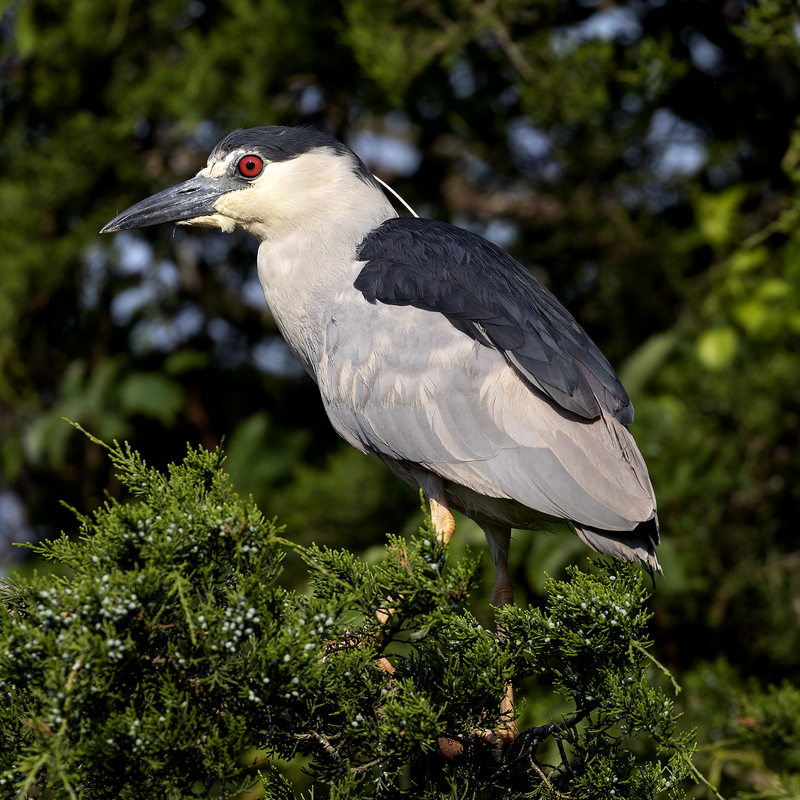
The Black-crowned night heron (Nycticorax nycticorax) is a medium-sized bird found in various parts of the world, including Europe, Asia, and North and South America.
It has black crowns on its head with white feathers underneath. Its wings are greyish brown while its underparts are mostly white.
This species can be seen foraging near shallow water or along coastlines during dusk or dawn as it hunts small fish, amphibians, and crustaceans.
They also feed on insects such as grasshoppers and beetles which they find in meadows close to freshwater bodies like lakes or ponds where they breed during springtime making nests using twigs lined with reeds and leaves near these waterside habitats.
In Australasia, this species hybridizes with the nankeen night heron that inhabits those areas instead; however, both populations remain distinct from each other despite their overlapping range regions.
Scientific classification:
| Kingdom | Animalia |
| Phylum | Chordata |
| Class | Aves |
| Order | Pelecaniformes |
| Family | Ardeidae |
| Genus | Nycticorax |
| Species | N. nycticorax |
Also Featured In: Common Birds Found in Switzerland, Birds of Kauai, Hawaii
15. Roseate Spoonbill
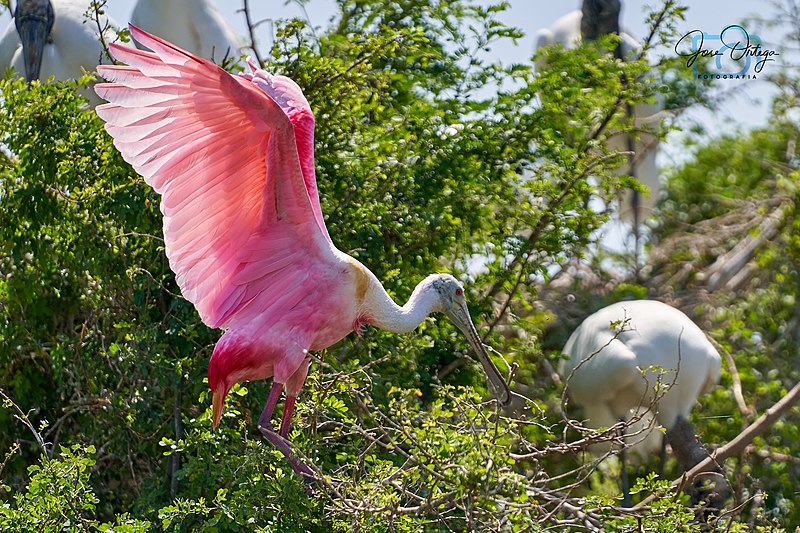
The Roseate Spoonbill is a beautiful and majestic bird found in both North and South America.
It belongs to the ibis family, Threskiornithidae, and its vibrant pink color comes from canthaxanthin pigment derived from their diet of crustaceans like shrimp.
Sadly plume hunting has almost driven this species close to extinction during the 18th and 19th centuries but fortunately, it’s making a comeback due to conservation efforts made by dedicated wildlife organisations.
Its large spoon-like bill helps them filter out food sources such as small fish or frogs from shallow water areas while they wade through mudflats with their long legs looking for something tasty.
With its unique appearance, graceful wingspan, and impressive flight capabilities, the Roseate Spoonbill is an incredibly photogenic animal that will captivate any viewer’s attention who happens to be lucky enough to witness it in all its glory.
Scientific classification:
| Kingdom | Animalia |
| Phylum | Chordata |
| Class | Aves |
| Order | Pelecaniformes |
| Family | Threskiornithidae |
| Genus | Platalea |
| Species | P. ajaja |
Also Featured In: Costa Rica Birds, Famous Paintings Birds
16. Snowy Egret
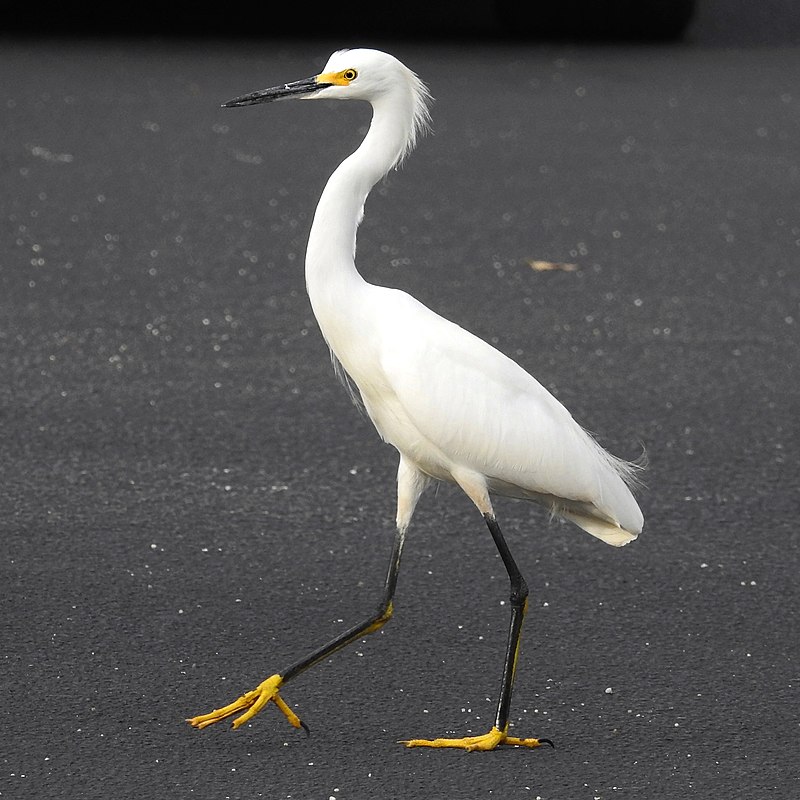
The Snowy Egret is a small white heron native to North America. Its scientific name, Egretta thula, comes from Provençal French for the little egret and an incorrect reference to the Black-necked Swan by Chilean naturalist Juan Ignacio Molina in 1782.
This beautiful bird has black legs yellow feet, and a long plume of feathers on its head that often appears as if it’s wearing a crown.
It feeds primarily on insects and aquatic life like fish or frogs making it well adapted for both wetland habitats such as marshes or swamps plus coastal areas close to shorelines.
With their graceful movements, they are truly delightful creatures to observe while out exploring nature.
Scientific classification:
| Kingdom | Animalia |
| Phylum | Chordata |
| Class | Aves |
| Order | Pelecaniformes |
| Family | Ardeidae |
| Genus | Egretta |
| Species | E. thula |
Also Featured In: Trinidad and Tobago birds, Birds that Live in the Deserts
17. Yellow-Crowned Night Heron
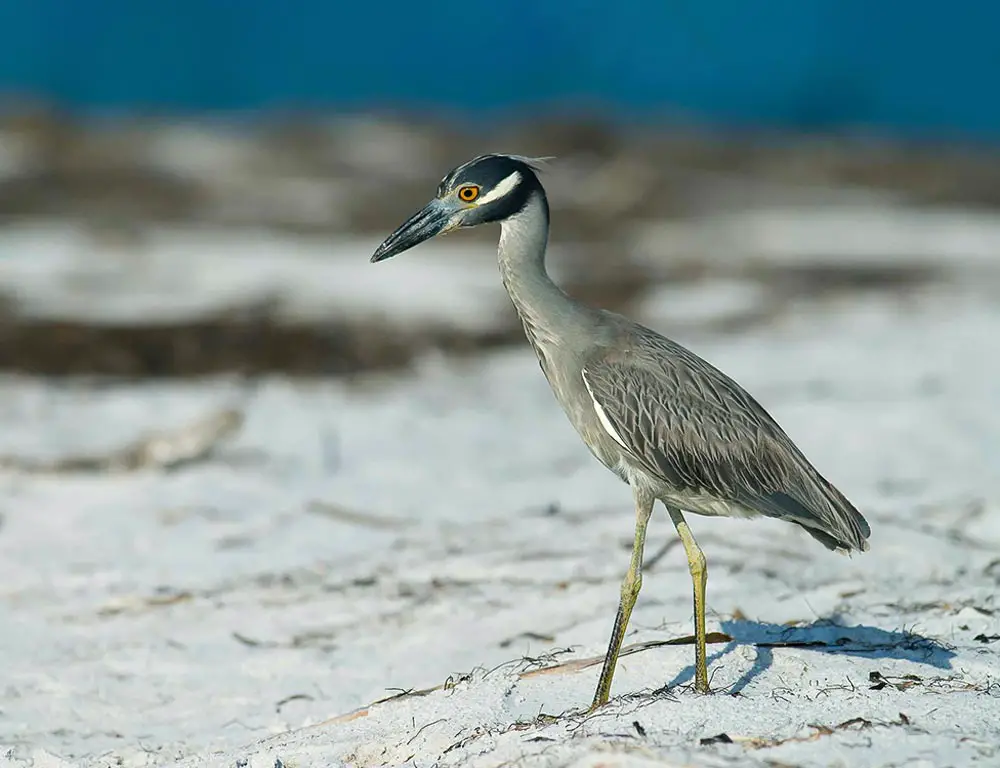
The Yellow-crowned night heron is a beautiful and unique species of bird native to the Americas. It has distinctive yellow crowns on its head, making it easy to identify among other herons.
These birds are also larger than most other types of herons, reaching up to 70 cm in length and 850 g in weight.
They usually feed on small fish or crustaceans while wading through shallow waters with their long legs.
The yellow-crowned night heron can be found near marshes or lakes during breeding season when they will build nests made from twigs high above the ground for protection against predators like raccoons and foxes.
This majestic bird is an important part of wetland ecosystems as it helps keep populations of smaller aquatic animals balanced by preying upon them.
Scientific classification:
| Kingdom | Animalia |
| Phylum | Chordata |
| Class | Aves |
| Order | Pelecaniformes |
| Family | Ardeidae |
| Genus | Nyctanassa |
| Species | N. violacea |
Also Featured In: Bermuda birds, Common Central Park Birds
18. Common Gallinule
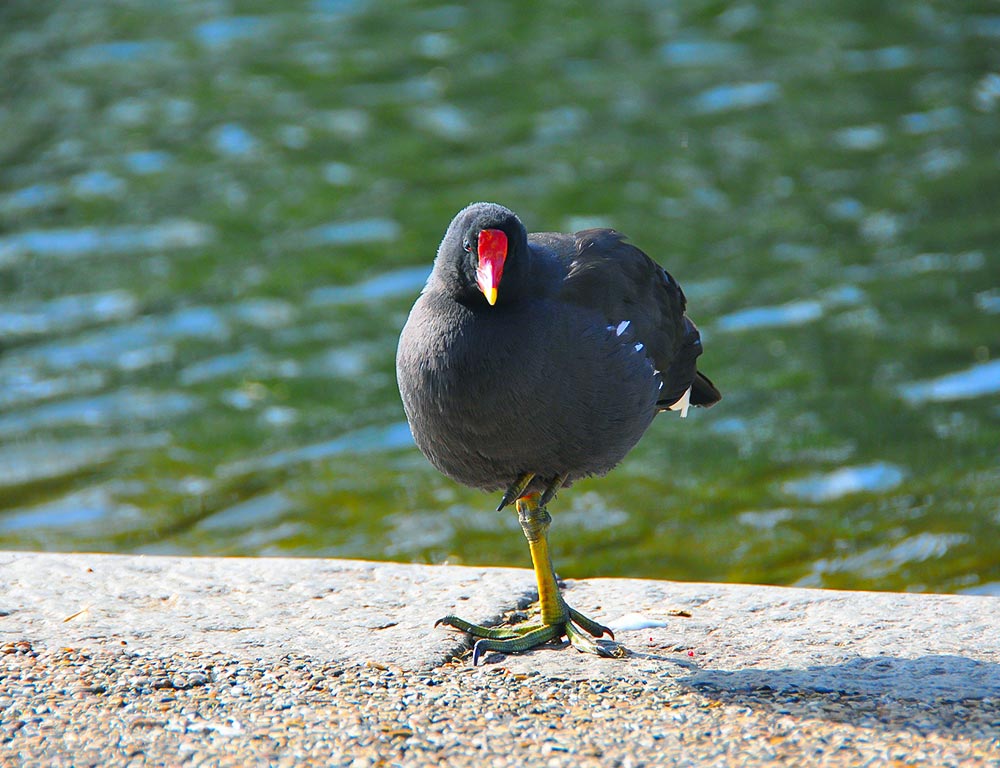
The Common Gallinule is a bird of the Rallidae family, native to parts of the Americas. It can be found in marshes, ponds, and other wetland habitats which are well-vegetated.
This species prefers temperate climates and is not generally seen in polar regions or rainforests.
It has mainly greyish plumage with black wings and tail feathers, while its head has orange markings on either side along with an orange bill and yellow legs.
The underside usually appears white when flying but may have buffy undertones during breeding season.
Its diet consists primarily of aquatic vegetation as well as small invertebrates such as insects, snails, or tadpoles; sometimes it will also take grains from fields nearby wetlands if available.
The Common Gallinule’s main call is a loud “kuk-kaa-kow” sound that can often be heard echoing across the areas where they reside.
Scientific classification:
| Kingdom | Animalia |
| Phylum | Chordata |
| Class | Aves |
| Order | Gruiformes |
| Family | Rallidae |
| Genus | Gallinula |
| Species | G. galeata |
Also Featured In: Long Island Birds You Should Know, Wetlands Birds You Should Know
19. American Bittern
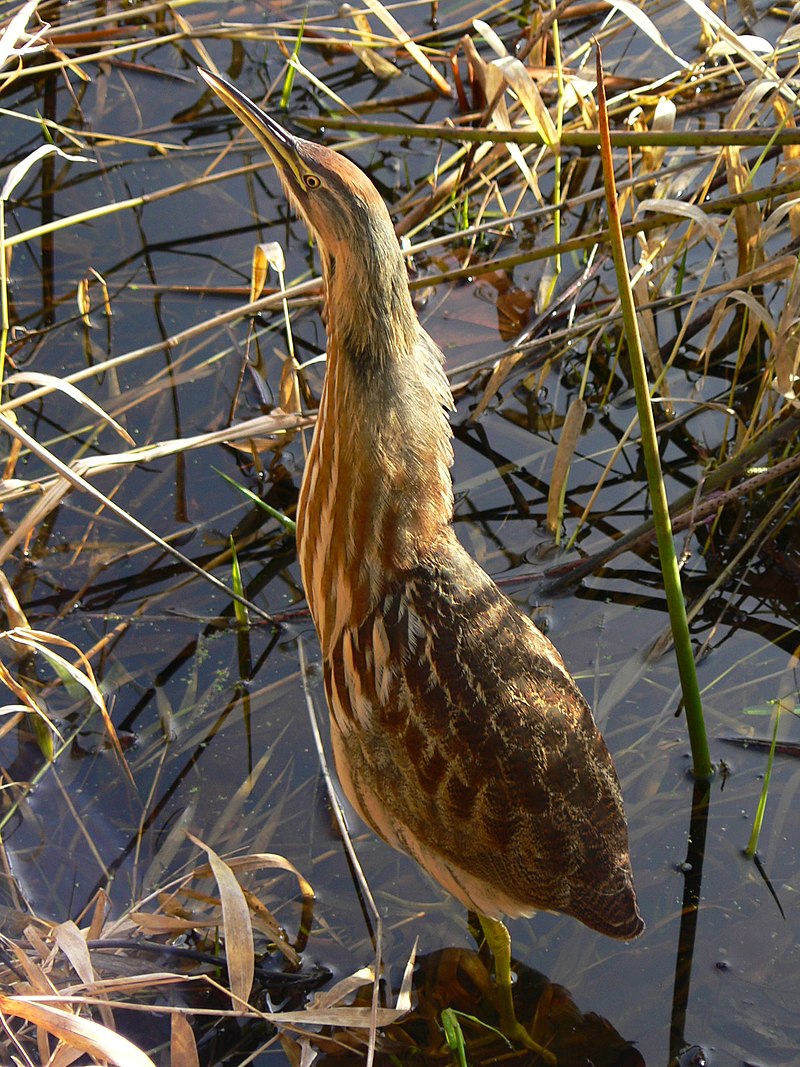
The American Bittern is a solitary, brown-wading bird from the heron family. It lives in North America and Central America, breeding in Canada and northern parts of the United States before migrating south to winter on the states surrounding the Gulf Coast as well as Florida’s Everglades.
Not only does it blend into its surroundings thanks to its muted coloring but it also has a unique call that helps keep it hidden – an “un-ducklike” booming sound that can travel long distances due to low-frequency vibrations.
The bittern spends most of their time alone but during mating season they become more social while gathering together at wetlands for courtship activities such as displaying feathers erect or head bobbing.
Scientific classification:
| Kingdom | Animalia |
| Phylum | Chordata |
| Class | Aves |
| Order | Pelecaniformes |
| Family | Ardeidae |
| Genus | Botaurus |
| Species | B. lentiginosus |
Also Featured In: Herons Species, Birds That Live in Colorado
20. Swamp Sparrow
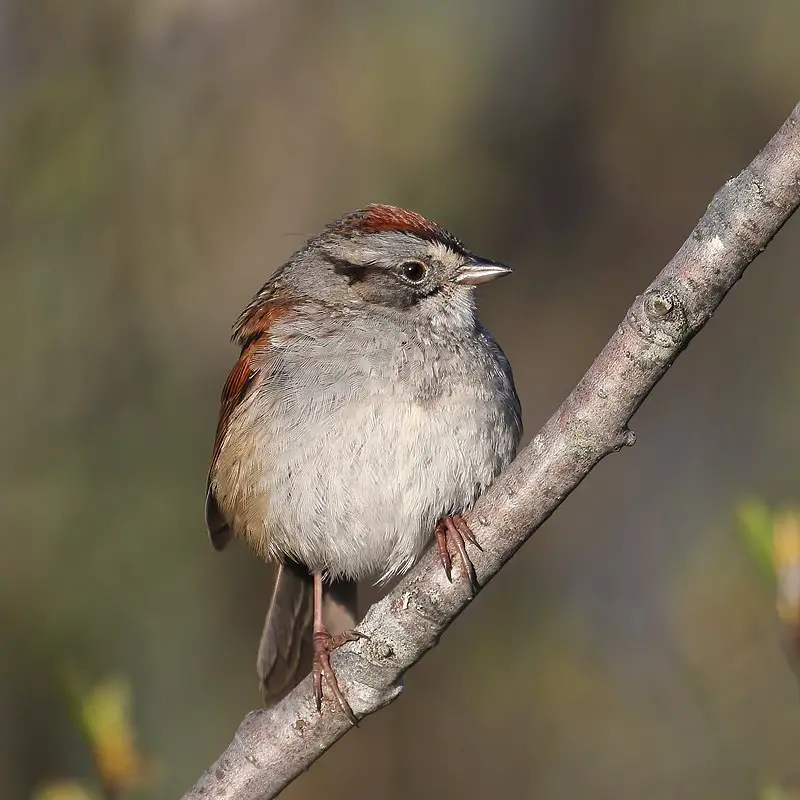
The Swamp Sparrow is a medium-sized bird found in the New World, closely related to the Song Sparrow.
It has rusty and buff streaked upper parts with an unstreaked gray breast, light belly, white throat, and striking rusty wings.
The male’s head features a rust-coloured cap while both genders have grey faces with dark lines through their eyes.
Their bills are short and conical in shape which helps them feed on seeds as well as grains easily from ground or low vegetation.
They usually appear solitary but can also be seen foraging together near waterbodies such as swamps or marshes during migration season.
Scientific classification:
| Kingdom | Animalia |
| Phylum | Chordata |
| Class | Aves |
| Order | Passeriformes |
| Family | Passerellidae |
| Genus | Melospiza |
| Species | M. georgiana |
Also Featured In: Sparrows Species, Birds that can be Seen in October
21. Whooping Crane
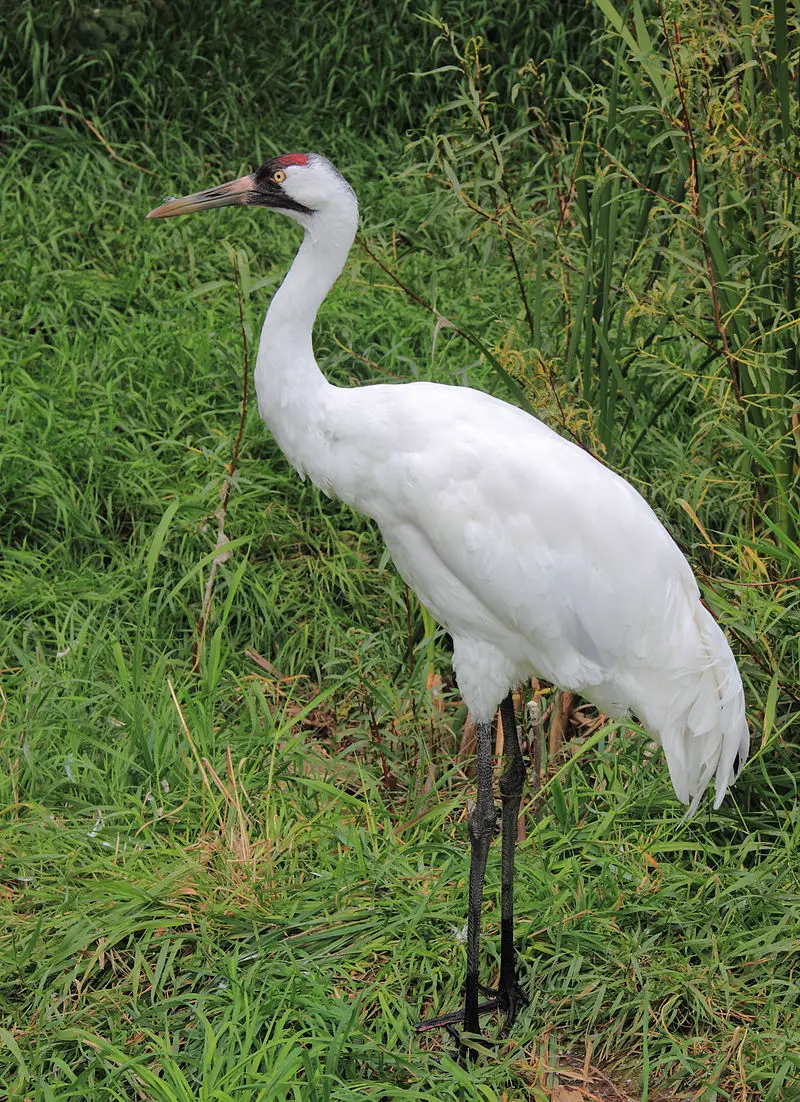
The majestic whooping crane is the tallest bird in North America, standing at over five feet tall.
Its name comes from its iconic call of “whoop-whoop-a-doodle”, making it one of only two species native to North America with a distinct vocalization.
Sadly, this beautiful animal was pushed to near extinction during the 1900s due to unregulated hunting and habitat loss.
Fortunately, conservation efforts have helped boost their population again and they are now classified as endangered instead of critically endangered.
Whooping cranes live for an estimated 22 – 24 years in the wild and inhabit wetlands all across Canada and parts of the United States.
They feed on small fish, frogs, insects, mice, and other small animals; while breeding pairs travel together in flocks with their young ones during migration season between summering grounds (in Northern U.S.)and wintering grounds( Texas).
With continuous protection measures taken towards them by organizations like Operation Migration, we may be able to witness these graceful birds soaring through our skies once more.
Scientific classification:
| Kingdom | Animalia |
| Phylum | Chordata |
| Class | Aves |
| Order | Gruiformes |
| Family | Gruidae |
| Genus | Grus |
| Species | G. americana |
Also Featured In: Texas Birds, Birds of Taiga
22. Great Herons
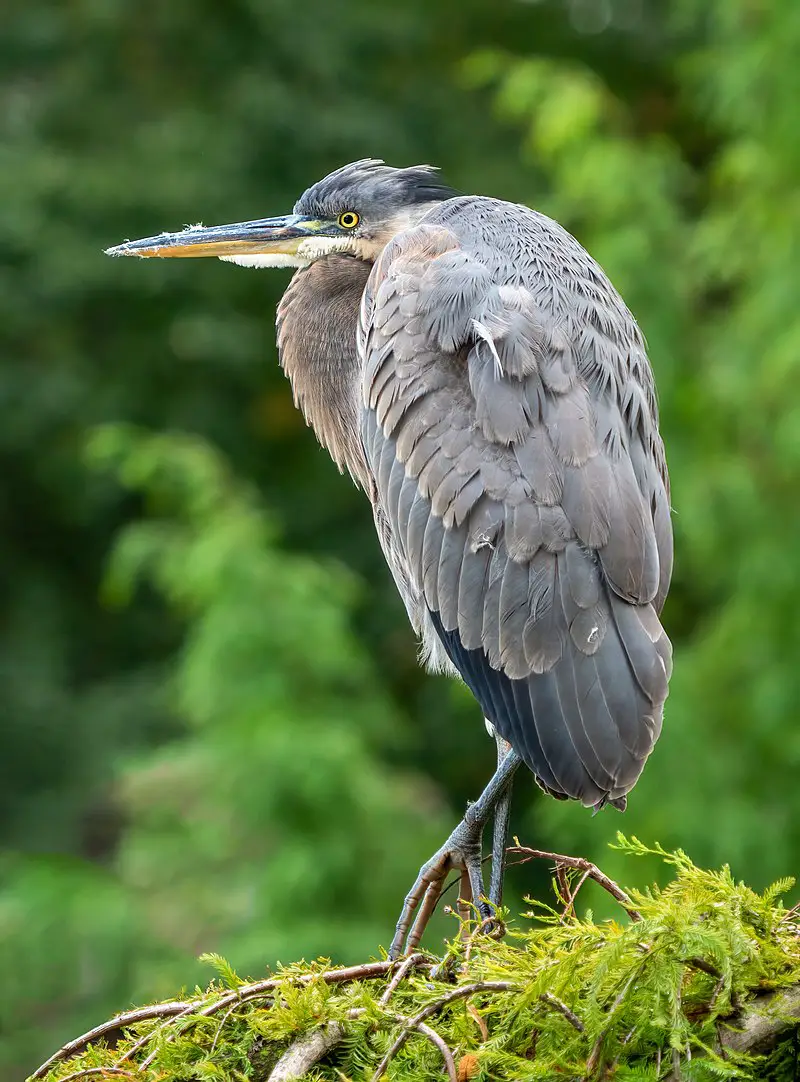
Great herons are a part of the Ardea genus of herons. They are known for their large size, typically measuring 80-100 cm in length. These birds can be found in wetlands where they hunt for fish, frogs, and other aquatic prey.
Great herons are known to breed in colonies in trees, building large stick nests for their young. Unlike some other heron species, great herons may migrate south during the winter months.
With their impressive size and stunning plumage, great herons are a beloved sight for birdwatchers and nature enthusiasts alike.
Scientific classification:
| Kingdom | Animalia |
| Phylum | Chordata |
| Class | Aves |
| Order | Pelecaniformes |
| Family | Ardeidae |
| Subfamily | Ardeinae |
| Genus | Ardea Linnaeus, 1758 |
Also Featured In: Common Birds in the Cities,
23. Grus
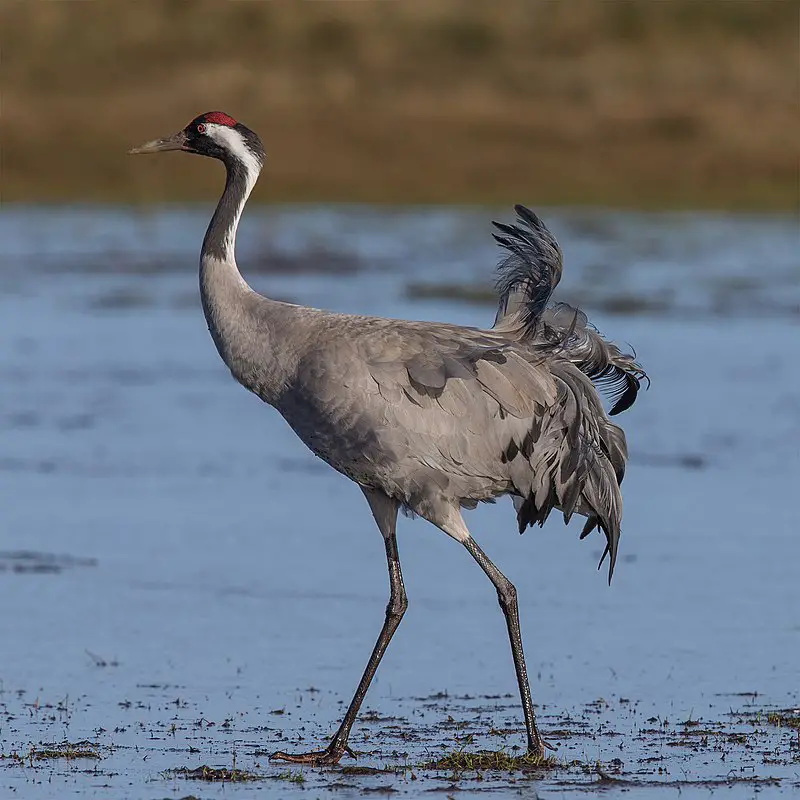
Grus is a magnificent bird found in the crane family. The name Grus comes from the Latin word for crane. This genus of large birds was first described in 1760 by the French zoologist Mathurin Jacques Brisson.
Though some credit Peter Simon Pallas with the genus’s creation, the International Commission on Zoological Nomenclature has decided that Brisson’s work should hold priority. These birds are truly a sight to behold, with their striking size and beauty.
While they are not commonly seen in populated areas, those who have witnessed them in the wild can attest to their majesty. Grus birds are truly a testament to the awe-inspiring variety of life on our planet.
Scientific classification:
| Kingdom | Animalia |
| Phylum | Chordata |
| Class | Aves |
| Order | Gruiformes |
| Family | Gruidae |
| Genus | Grus Brisson, 1760 |
To Recap
Delving into the world of swamp birds has been a fascinating journey through the wetlands, marshes, and swamps, where these avian creatures thrive.
Through “23 Swamps Birds You Should Know,” we have gained a deeper understanding of the unique and often overlooked beauty of these feathered inhabitants.
We’ve discovered their distinct behaviors, habitats, and the vital roles they play in our ecosystems. This book not only serves as a guide to identify and appreciate these remarkable birds but also underscores the importance of conserving their fragile habitats.
As stewards of the environment, we must protect these wetlands and ensure the continued existence of these remarkable swamp birds for future generations to admire and study.